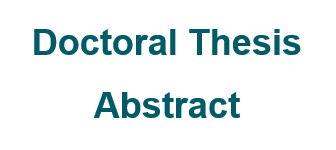Progressive inclusion of forage in the diet of growing-finishing pigs
effect of quantity and type of fiber on productive performance, digestive utilization and nitrogen excretion: Doctoral thesis abstract
DOI:
https://doi.org/10.31285/AGRO.26.1514Keywords:
consumption, dietary fiber, food, pigs, soluble fiberAbstract
The effect of the inclusion of two forages (alfalfa and chicory) with different soluble fiber (SF) content on the apparent digestibility (DA) of nutrients, nitrogen retention (NR) and the productive response of diets for pigs was evaluated in three physiological states. The digestibility test consisted of a sequence of three in vivo digestibility and metabolism with nine animals, castrated males. Each test corresponded to a weight phase and to an inclusion level. In the performance test, 27 animals were used, evaluating the progressive inclusion of the two forages from rearing to finishing. The treatments in the two experiments were: control base diet (T0) formulated based on corn and soybean meal, and base diet with alfalfa (T1) (Medicago sativa var. Chaná) or with chicory (T2) (Cichorium intibus var. Lacerta) for phases (F) of rearing I (F1, 40-60 kg LW), rearing II (F2, 60-80 kg LW) and finishing (F3, 80 to 100 kg LW). The results showed that the in vivo apparent digestibility (AD) of OM in the diet was reduced by around 10 % (P < 0.05) when forage was included for all levels evaluated (10, 20 and 30 %) compared to with the control diet (88 %). However, the final weight and daily gain did not differ between treatments, given the higher dry matter intake recorded. There was no reduction in the digestive utilization of fiber determined as NDF, FI, FS in diets with forage as the inclusion level increased, but higher records were obtained for the weight of the components of the gastrointestinal tract of pigs, in particular the colon on T2 (P < 0.05), which negatively affected carcass yield in these animals (77.4 %, P < 0.05). This work contributes with information to carry out an optimal substitution of conventional feeds in pursuit of the development of sustainable feeding systems in pig production.
Downloads

Published
How to Cite
Issue
Section
License
Copyright (c) 2022 Agrociencia Uruguay

This work is licensed under a Creative Commons Attribution 4.0 International License.
| Article metrics | |
|---|---|
| Abstract views | |
| Galley vies | |
| PDF Views | |
| HTML views | |
| Other views | |

















